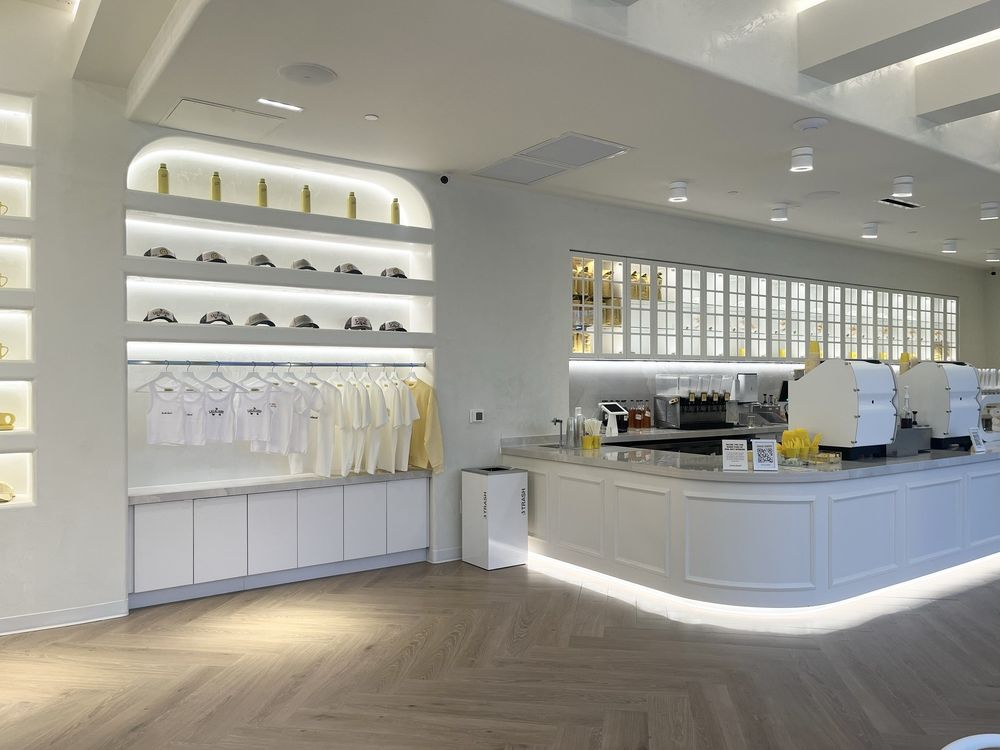Tenant finishing transforms raw commercial space into operational businesses. It’s also called tenant improvement or build-out work. Commercial construction professionals help businesses customize workspaces for specific needs. This specialized process requires expertise in commercial building requirements. The right finish creates productive environments for employees and customers.
Every business needs a space that works efficiently. Proper tenant finishing affects daily operations and customer experiences. It goes beyond simple decoration or paint choices. Smart finishing decisions impact employee productivity and business growth. They also ensure spaces meet all legal requirements.
This guide explores every aspect of commercial tenant finishing. You’ll learn the complete process from planning to completion. We’ll cover essential factors that affect your project’s success. Understanding these elements helps you make informed decisions.

Understanding Commercial Tenant Finishing
Commercial spaces need modifications before businesses can operate effectively. Raw spaces rarely meet specific business needs without customization. This transformation process is called tenant finishing or build-out.
Tenant finishing includes all interior work from design to completion. It requires collaboration between tenants, landlords, and construction professionals. Each party plays a crucial role in project success. Clear communication ensures everyone’s needs are met throughout the process.
The scope of tenant finishing varies by business type. Common modifications include adding or removing interior walls. Electrical systems often need upgrades for modern business equipment. Plumbing work may be necessary for restaurants or medical offices. HVAC systems require adjustments for optimal comfort and efficiency.
Surface finishes transform the look and feel of spaces. New flooring improves both appearance and functionality. Fresh paint colors reinforce brand identity and atmosphere. Lighting design affects mood and productivity levels. These elements work together to create cohesive environments.
Tenant improvements represent a major business investment. Well-executed projects enhance brand recognition and customer loyalty. Employees work better in thoughtfully designed spaces. Customer experiences improve in professionally finished environments. These benefits justify the initial investment costs.
Smart planning reduces unexpected expenses and delays. Understanding the process helps businesses budget accurately. It also ensures spaces meet current and future needs.

Understanding the Tenant Improvement Process
The tenant improvement process involves multiple critical phases. Each step ensures project success and tenant satisfaction. From initial planning to final occupancy, attention to detail matters. Understanding this process helps both tenants and landlords achieve their goals.
Initial Planning and Design Phase
Before construction starts, tenants and designers collaborate on space concepts. This phase focuses on understanding business needs and goals. Teams work together to create functional, appealing environments. Design professionals translate brand identity into physical spaces. They consider lighting, colors, and traffic flow carefully. The goal is creating spaces that work for employees and customers. Clear communication during this phase prevents costly changes later.
Creating Technical Documentation
After establishing the vision, designers create detailed commercial construction drawings. These technical documents guide the entire construction process. Specifications outline materials, quality standards, and work scope clearly. Accurate documentation helps contractors understand project requirements. It also prevents misunderstandings during the construction phase. Professional drawings ensure everyone shares the same vision. This documentation becomes the project’s official roadmap.
Budget Planning and Financial Considerations
Converting designs into reality requires careful financial planning. Understanding tenant improvement allowances is crucial for budget management. Landlords typically contribute specific amounts toward improvements. Tenants must know these allowance terms to avoid surprises. Clear agreements protect both parties’ financial interests. Budget planning should include contingencies for unexpected costs. Early financial clarity helps projects stay on track.
Building Permits and Regulations
Commercial projects must comply with local building codes. Obtaining permits can be complex and time-consuming. Experienced construction companies streamline this regulatory process. They understand local requirements and inspection procedures. Proper permits ensure spaces are safe and legal. Starting permit applications early prevents construction delays. Working with knowledgeable professionals saves time and money.
The Construction Phase
With permits approved, physical construction can begin. This phase requires coordination among multiple trade professionals. Electricians, plumbers, and carpenters work together seamlessly. Regular communication keeps projects moving forward smoothly. Site meetings help address issues quickly. Progress reports keep all stakeholders informed. Effective coordination prevents delays and budget overruns.
Project Management Excellence
Strong project management keeps construction on schedule and budget. Managers coordinate various trades and monitor daily progress. They make quick decisions when challenges arise. Regular updates keep tenants informed about project status. Good managers anticipate problems before they become serious. Their expertise ensures smooth project execution. Professional management makes complex projects seem effortless.
Maintaining Quality Standards
Quality control happens throughout the construction process. Regular inspections catch problems early, saving time and money. Experienced teams know what to look for. They ensure work meets specifications and building codes. Quality checks protect both tenant and landlord interests. Early problem detection prevents costly repairs later. Consistent standards ensure professional results.
Project Completion and Handover
When construction finishes, several important steps remain. The space must be properly prepared for occupancy. Final inspections ensure everything meets agreed standards. Any remaining issues need immediate attention. Proper handover procedures protect all parties involved. This phase sets the stage for successful occupancy. Attention to final details matters greatly.
Conducting Final Inspections
Comprehensive walk-throughs identify any remaining punch list items. These typically involve minor finishing touches or adjustments. Both parties review the space together carefully. All systems undergo testing to ensure proper operation. Documentation of completed work provides future reference. Thorough inspections prevent disputes after occupancy. This process ensures tenant satisfaction.
Providing Continued Support
Quality construction companies offer support beyond project completion. They address warranty issues promptly and professionally. Staff training on new systems ensures smooth operations. Ongoing relationships benefit both tenants and landlords. Good contractors remain available for future needs. This support demonstrates commitment to client success. Long-term partnerships create value for everyone involved.

Essential Tips for Starting Your Commercial Space Renovation
Starting a commercial space remodeling requires careful planning and preparation. Every decision impacts your project’s success and budget. Understanding key factors helps avoid costly mistakes and delays. Let’s explore what you need to know before beginning.
Build Your Professional Support Network
Finding experienced professionals is crucial for renovation success. Look for designers, architects, contractors, and project managers with proven expertise. Many businesses choose full-service commercial construction companies for convenience. These companies handle multiple aspects under one roof. Experience with commercial projects matters significantly. Your team should understand unique commercial requirements and regulations. They must know local building codes and permit processes. Strong communication between team members prevents expensive misunderstandings.
Master Your Renovation Budget and Allowances
Understanding your renovation allowance saves money and prevents surprises. Review what your landlord’s allowance covers before starting work. Know exactly which improvements qualify for reimbursement. Ask about the approval process for extra funding requests. Create detailed budgets that include contingency amounts. Track all expenses carefully throughout the project. Document every change order and additional cost. Clear financial planning helps you maximize available resources effectively.
Navigate Legal Requirements and Safety Standards
Following building codes isn’t optional, it’s legally required. Research local regulations before designing your space. Ensure all plans meet current safety standards. Work with professionals who understand compliance requirements. Schedule necessary inspections at appropriate project stages. Keep detailed records of all permits and approvals. Non-compliance causes expensive delays and potential fines. Proper planning prevents legal issues from disrupting your timeline.
Manage Your Project Timeline Strategically
Effective timing directly impacts your bottom line. Construction delays cost money through lost business opportunities. Build realistic schedules with buffer time included. Identify potential bottlenecks early in the planning phase. Communicate regularly with your construction team about progress. Create backup plans for common delay scenarios. Monitor supply chain issues that might affect materials. Smart scheduling helps you open on time and on budget.

Popular Design Trends for Modern Commercial Spaces
Commercial space design constantly evolves with changing business needs. Today’s trends reflect how companies work and interact. Smart design choices create competitive advantages for businesses. Understanding current trends helps you make informed renovation decisions.
Creating Flexible and Adaptable Workspaces
Modern businesses need spaces that adapt to changing requirements. Remote work and collaboration demand versatile office layouts. Choose movable walls and modular furniture systems. Design areas that serve multiple purposes throughout the day. Include quiet zones alongside collaborative spaces. Flexibility future-proofs your investment against organizational changes. Easy reconfiguration saves money on future renovations. Consider how your space might evolve over time.
Building with Sustainability in Mind
Environmental responsibility drives many design decisions today. Companies want spaces that minimize environmental impact. Select recycled and locally sourced building materials. Install energy-efficient lighting and HVAC systems. Add plants and natural elements for better air quality. Choose finishes that last longer and require less maintenance. Sustainable design often reduces long-term operating costs. Green building practices also attract environmentally conscious customers and employees.
Integrating Smart Technology Solutions
Technology transforms how modern commercial spaces function. Smart systems improve efficiency and user experience. Install automated lighting that adjusts to natural daylight. Add climate control systems that learn usage patterns. Design dedicated spaces for video conferencing needs. Include ample power outlets and charging stations throughout. Plan for strong Wi-Fi coverage in all areas. Technology integration enhances productivity and reduces energy waste. Future-ready spaces accommodate emerging tech innovations easily.
How Technology Transforms Commercial Tenant Finishing
Technology revolutionizes how businesses approach renovation projects today. Digital tools streamline every phase from planning to completion. Smart technology adoption saves time and reduces costly errors. Let’s explore the latest innovations changing commercial construction.
Digital Tools for Better Project Control
Modern project management software keeps renovations running smoothly. These platforms enable instant communication between all team members. Track budgets, timelines, and milestones in real time. Receive alerts about potential delays before they cause problems. Cloud-based systems let stakeholders access updates from anywhere. Digital documentation reduces paperwork and improves organization. Software analytics help identify efficiency opportunities throughout construction. Better project control means fewer surprises and smoother completions.
Eco-Friendly Materials and Building Methods
Sustainable construction technology advances rapidly each year. New materials combine recycled content with superior performance. Low-impact products reduce environmental footprints without sacrificing quality. Energy-efficient installation techniques minimize waste during construction. Smart material choices lower long-term maintenance costs significantly. Many sustainable options now cost less than traditional alternatives. Green building technology attracts environmentally conscious tenants and customers. Sustainable practices often qualify for tax incentives and rebates.
Virtual Design Tools Save Time and Money
3D modeling and virtual reality transform design planning processes. Walk through your future space before construction begins. Test different layouts and finishes without physical samples. Catch design conflicts early when changes cost less. Share realistic visualizations with stakeholders for faster approvals. Virtual tools reduce miscommunication between designers and clients. Experience accurate lighting and spatial relationships before committing. These technologies prevent expensive mid-project design changes effectively.

Common Commercial Renovation Mistakes and How to Avoid Them
Commercial renovations face numerous challenges that derail unprepared projects. Understanding common pitfalls helps protect your investment and timeline. Smart planning prevents most renovation disasters before they happen. Here’s what to watch for during your project.
The Dangers of Insufficient Planning
Skipping thorough planning creates expensive problems later. Many businesses rush construction without finalizing important details. This leads to constant design changes during building. Each change increases costs and extends completion dates. Scope creep happens when plans aren’t clearly defined. Spend extra time perfecting plans before breaking ground. Detailed planning reduces total project time and expense. Front-loading effort saves significant money and stress.
Communication Breakdowns Cost Time and Money
Poor communication causes most renovation conflicts and delays. Every stakeholder needs clear understanding of project expectations. Document all decisions about design, materials, and timelines. Regular meetings keep everyone aligned throughout construction. Written confirmations prevent costly misunderstandings about changes. Establish clear channels for questions and approvals. Define who makes decisions about different project aspects. Strong communication protocols prevent disputes and keep projects moving.
Prepare for Unexpected Challenges
Every renovation encounters surprises despite careful planning. Smart businesses build flexibility into schedules and budgets. Add 10-20% contingency funds for unforeseen expenses. Create backup plans for material shortages or delays. Identify alternative solutions before problems arise. Know your priorities if trade-offs become necessary. Quick decision-making minimizes the impact of disruptions. Well-prepared teams handle challenges without derailing entire projects. Contingency planning turns potential disasters into minor inconveniences.
Conclusion
Commercial tenant finishing transforms empty spaces into thriving businesses. Success requires careful planning, experienced professionals, and strategic decision-making. Understanding the complete process helps avoid costly mistakes and delays. Modern technology and sustainable practices create better spaces while reducing costs.
Your renovation project represents a significant investment in your business future. Choose experienced partners who understand commercial construction requirements and regulations. Build realistic budgets with proper contingency planning for unexpected challenges. Clear communication keeps projects on schedule and within budget.
Remember that well-executed tenant finishes enhance employee productivity and customer experiences. They strengthen brand identity and create competitive advantages in the marketplace. Take time to plan thoroughly before starting construction. Consider current design trends and future business needs carefully.
Professional tenant finishing sets the foundation for long-term business success. Start your project with confidence by following these proven strategies.
Frequently Asked Questions
How long does a typical commercial tenant finish project take?
Most commercial tenant finish projects take between 8-16 weeks. Timeline depends on space size and complexity. Simple office renovations may finish in 6-8 weeks. Restaurants and medical facilities often require 12-20 weeks. Permit approvals can add 2-4 weeks upfront. Factor in design time before construction begins. Build buffer time into your schedule for delays.
What’s included in a tenant improvement allowance from landlords?
Tenant improvement allowances typically cover interior construction costs. This includes walls, flooring, ceiling work, and basic lighting. Most allowances cover electrical and plumbing modifications too. HVAC adjustments usually qualify for reimbursement. Landlords rarely cover furniture or specialized equipment costs. Moving expenses aren’t typically included either. Review your lease agreement for specific details. Ask about the reimbursement process before starting work.
Do I need permits for tenant improvement projects?
Yes, most tenant improvements require building permits. Electrical and plumbing work always needs permits. Moving walls or changing layouts requires permits too. HVAC modifications need mechanical permits and inspections. Even minor renovations may need permit approval. Check with local building departments early. Experienced contractors handle permit applications for you. Starting without permits causes expensive delays and fines.
What’s the difference between tenant improvements and building standard finishes?
Building standard finishes are basic landlord-provided features. These include standard carpet, paint, and lighting fixtures. Tenant improvements customize spaces beyond these basics. They reflect specific business needs and brand identity. Improvements might include custom millwork or specialized lighting. Upgraded flooring and unique paint schemes qualify too. Technology infrastructure often exceeds building standards. Understanding this difference helps negotiate better allowances effectively.

